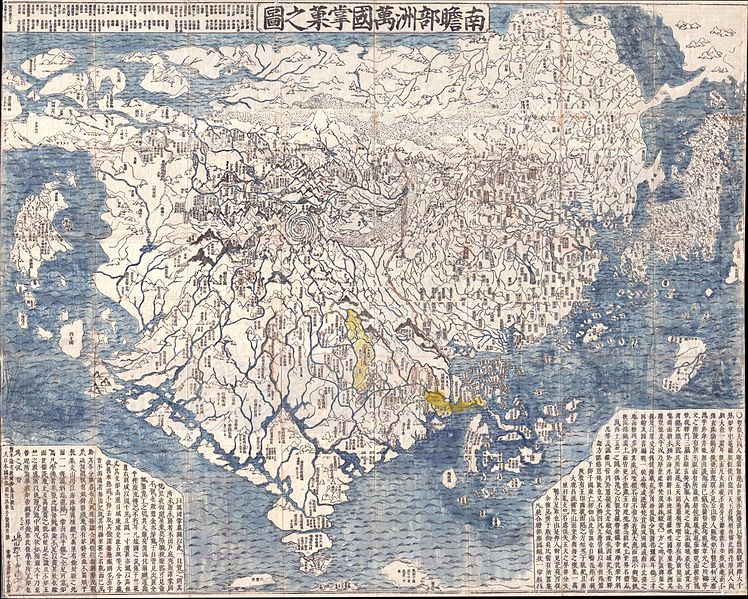File:1710 First Japanese Buddhist Map of the World Showing Europe, America, and Africa - Geographicus - NansenBushu-hotan-1710.jpg
Vai alla navigazione
Vai alla ricerca

Dimensioni di questa anteprima: 748 × 599 pixel. Altre risoluzioni: 300 × 240 pixel | 599 × 480 pixel | 958 × 768 pixel | 1 278 × 1 024 pixel | 2 556 × 2 048 pixel | 5 837 × 4 678 pixel.
File originale (5 837 × 4 678 pixel, dimensione del file: 7,26 MB, tipo MIME: image/jpeg)
Cronologia del file
Fare clic su un gruppo data/ora per vedere il file come si presentava nel momento indicato.
| Data/Ora | Miniatura | Dimensioni | Utente | Commento | |
|---|---|---|---|---|---|
| attuale | 02:23, 24 mar 2011 |  | 5 837 × 4 678 (7,26 MB) | BotMultichillT | {{subst:User:Multichill/Geographicus |link=http://www.geographicus.com/P/AntiqueMap/NansenBushu-hotan-1710 |product_name=1710 First Japanese Buddhist Map of the World Showing Europe, America, and Africa |map_title=Nansenbushu Bankoku Shoka No Zu (Outlin |
Pagine che usano questo file
La seguente pagina usa questo file:
Utilizzo globale del file
Anche i seguenti wiki usano questo file:
- Usato nelle seguenti pagine di en.wikipedia.org:
- Usato nelle seguenti pagine di es.wikipedia.org:
- Usato nelle seguenti pagine di hi.wikipedia.org:
- Usato nelle seguenti pagine di www.wikidata.org:
